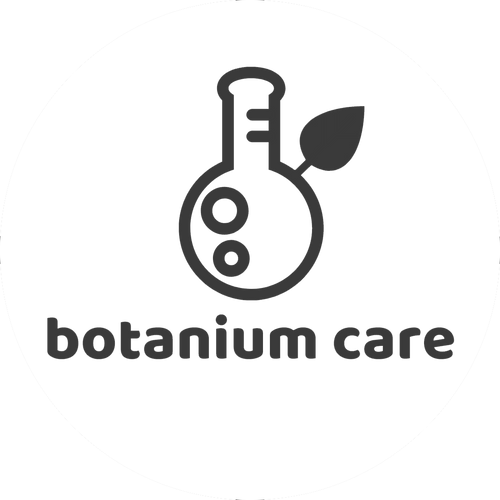Rosehip Seed Oil’s known properties at a glance
- Skin regenerative
- Prevent premature aging
- Reduces the appearance of wrinkles & scars
- Prevent transepidermal water loss
- Aids in burns, eczema & wounds recovery
What is Rosehip Seed Oil?
Rosa canina, aka “dog rose”, is native in the northern hemisphere in Europe, Asia, the Middle East, and North America. The plant is a long-lived perennial shrub, growing in dry woodland margins, and often seen in gardens as well as on roadsides.
Rosehip Seed Oil is a powerhouse of beneficial compounds, each contributing to its reputation as an effective skincare ingredient. The combination of fatty acids, vitamins, and antioxidants makes it particularly useful for a variety of skin concerns, including dryness, aging, and inflammation.
Why is Rosehip Seed Oil special?
Rosehip Seed Oil is extracted through a cold-press process from the seeds of wild rose hips. The seeds, after harvesting, undergo mechanical pressing without heat or solvents to preserve the oil's natural composition. The virgin oil extracted yields a golden-red coloured liquid which contains vitamins A, D and E, and its composition is made up of approximately 71% Essential Fatty Acids. It is known for its skin hydrating properties and ability to help with skin regeneration and repairs. The oil is a rich source of Omega 3, 6 and 9, all of which help to promote healthy skin regeneration at the basal layer of the epidermis.
Reduce Transepidermal Water Loss
The linoleic Acid (Omega-6) in the oil helps maintain the skin barrier, reduces transepidermal water loss and improves hydration.
A study published in the Journal of Investigative Dermatology (2015) found that linoleic acid deficiency can lead to impaired skin barrier function and increased dryness.
Reduce Inflammation / Redness
The Alpha-Linolenic Acid (Omega-3) & phytosterols in the oil possess anti-inflammatory properties and can help soothe irritated skin and reduce redness.
A research in Dermatologic Therapy (2011) indicated that omega-3 fatty acids can improve skin barrier function and reduce inflammation.
A study in *The Journal of Clinical and Aesthetic Dermatology* (2016) noted that phytosterols can improve skin barrier function and reduce inflammation.
Promotes cell turnover
The Vitamin A (Retinoids) content in the oil reduces fine lines and wrinkles, helps with acne & reduces scarring and improves skin texture.
A systematic review in *Clinical Interventions in Aging* (2016) highlights the effectiveness of retinoids in improving signs of aging and skin texture.
A study in *Dermatologic Surgery* (2014) demonstrated that topical retinoids are effective in treating acne and improving skin texture.
Protects the skin from Environmental & Oxidative Stress
Rosehip Seed Oil contains tocopherols (vitamin E), carotenoids, and sterols & phenolic compounds that are shown to have antioxidant properties, protecting the skin from oxidative stress and UV damage.
A study in the *Journal of the American Academy of Dermatology* (2007) found that vitamin E can enhance skin protection and repair.
How do we use Rosehip Seed Oil?
Our REJUVENATOR is formulated with Rosehip Seed oil, working synergistically with 8 other skin-loving ingredients from nature. Our aim is to offer high quality natural products to help keep your skin naturally rejuvenated over the long term.
Our rosehip seed oil is unrefined, certified organic from Poland.
About Ingredient Spotlight Series
Our Ingredient Spotlight Collection offers you informative details on the wonderful ingredients we use in formulating our products.
References
Sarah Shabih, ... Cassandra L. Quave, in Medicinal Plants as Anti-Infectives, 2022
Kayahan, S., Ozdemir, Y., & Gulbag, F. (2022). Functional Compounds and Antioxidant Activity of Rosa Species Grown In Turkey. Erwerbs-Obstbau, 1–8. Advance online publication. https://doi.org/10.1007/s10341-022-00688-5
Gramlich, L., Meddings, L., Alberda, C., Wichansawakun, S., Robbins, S., Driscoll, D., & Bistrian, B. (2015). Essential Fatty Acid Deficiency in 2015: The Impact of Novel Intravenous Lipid Emulsions. JPEN. Journal of parenteral and enteral nutrition, 39(1 Suppl), 61S–6S. https://doi.org/10.1177/0148607115595977
Yosuke Amagai et al, Dihomo-g-linolenic acid prevents the development of atopic dermatitis through prostaglandin D1 production in NC/Tnd mice, 2015, DOI: https://doi.org/10.1016/j.jdermsci.2015.03.010
Suzanne M. Pilkington et al, Omega-3 polyunsaturated fatty acids: photoprotective macronutrients, 2011, https://doi.org/10.1111/j.1600-0625.2011.01294.x

